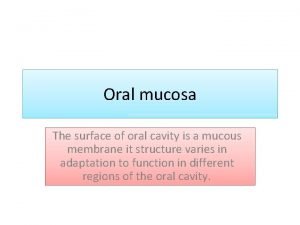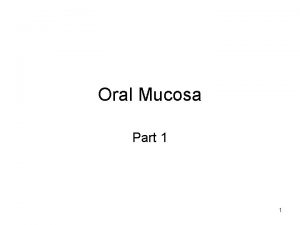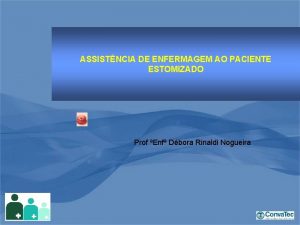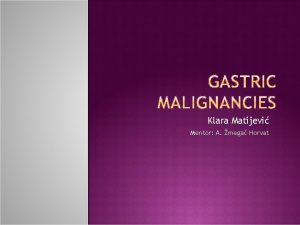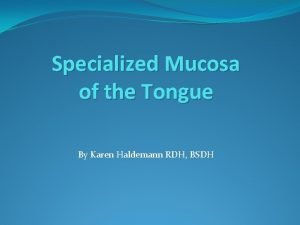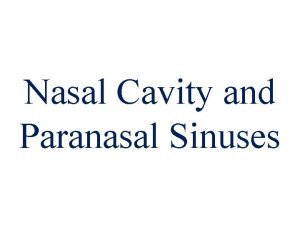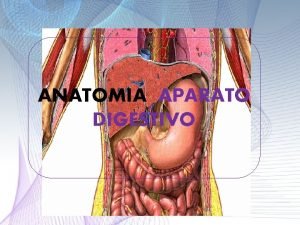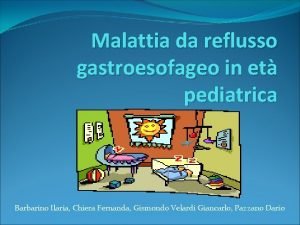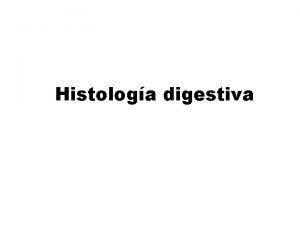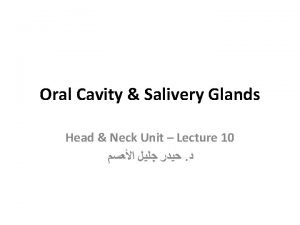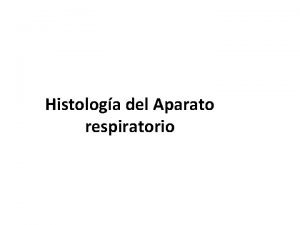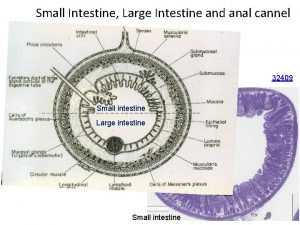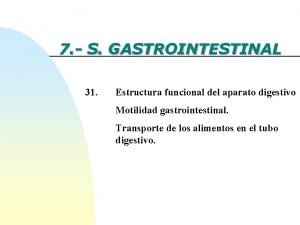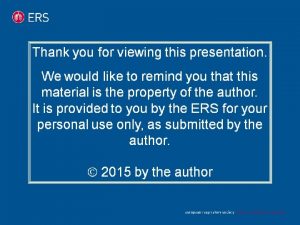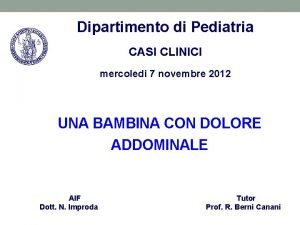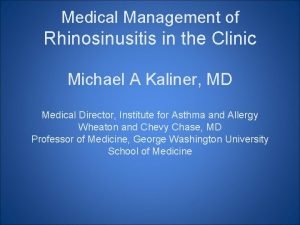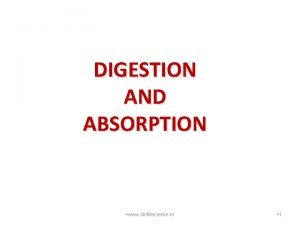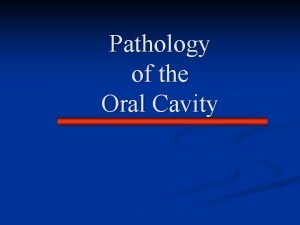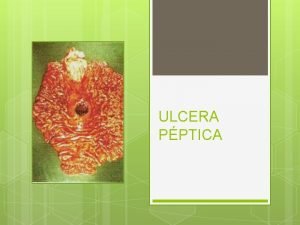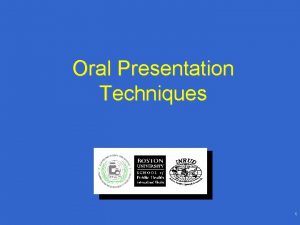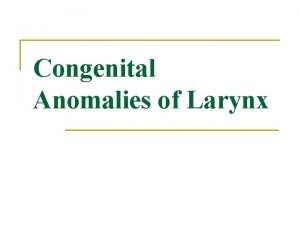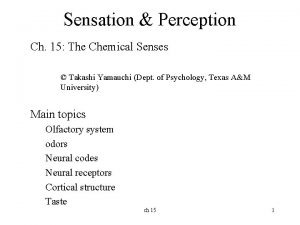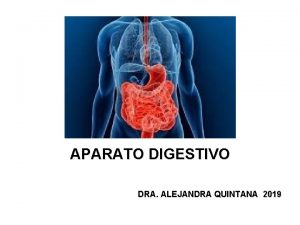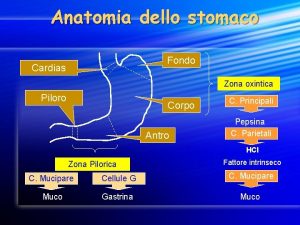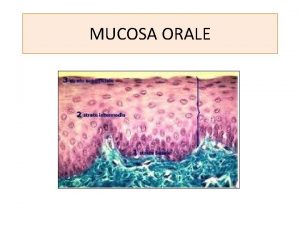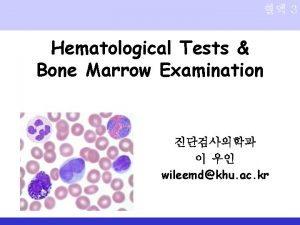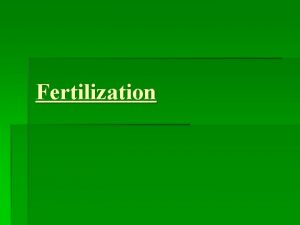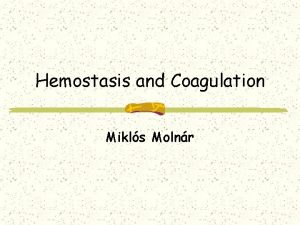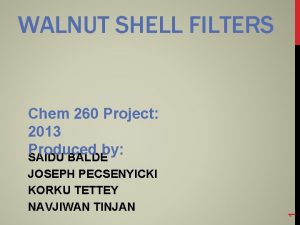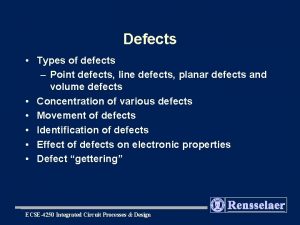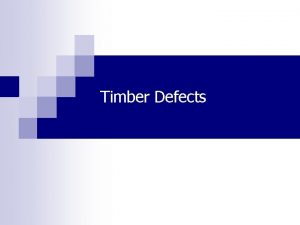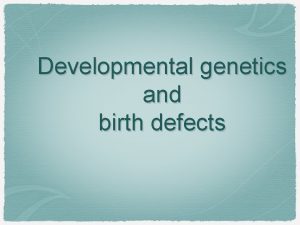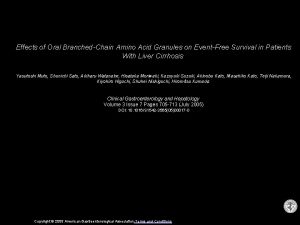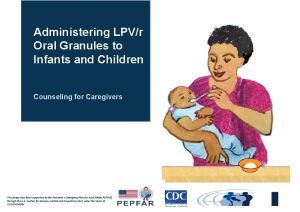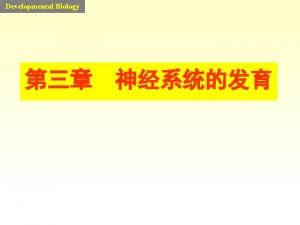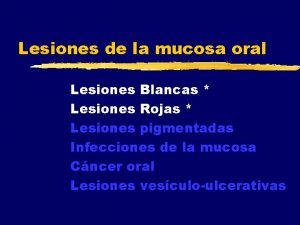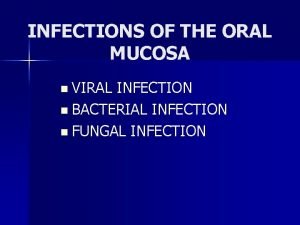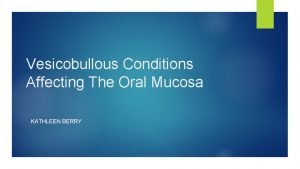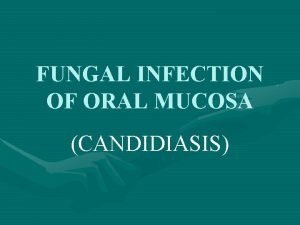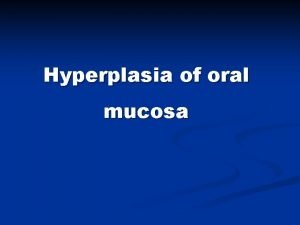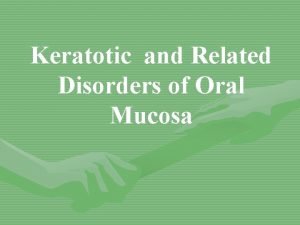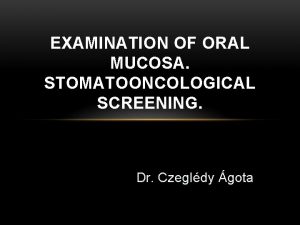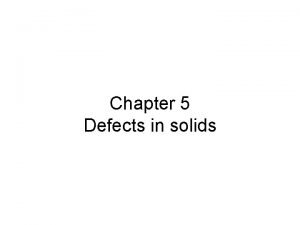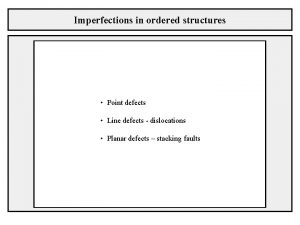Developmental Defects of Oral Mucosa FORDYCES GRANULES in




































- Slides: 36

Developmental Defects of Oral Mucosa


FORDYCE’S GRANULES in buccal mucosa FORDYCE’S GRANULES in upper lip

Fordyces`s granules


Leukoedema. White, wrinkled appearance of the buccal mucosa.




White sponge naevus. The keratosis is irregular and folded and extends into areas which are not subject to friction.

White Sponge Nevus

The Retrocuspid Papilla • Developmental lesion that occurs on the gingiva lingual to the mandibular cuspid. • It is frequently bilateral and typically appears as a small, pink papule. • Quite common, in children and young adults. Retrocuspid papilla. Bilateral papular lesions on the gingiva lingual to the mandibular canines (arrows).

Microscopic Examination • Reveals a mass of vascular fibrous connective tissue, which is usually loosely arranged. • The hallmark is the presence of numerous large, stellate fibroblasts within the superficial connective tissue. A, Low-power view showing a nodular mass of fibrous connective tissue covered by stratifi ed squamous epithelium. . B, High-power view showing multiple large stellate-shaped and multinucleated fibroblasts.

Developmental Defects of Tongue


Macroglossia


Microglossia

HAIRY TONGUE • Hairy tongue is an unusual condition. which occurs due to an increase in keratin production and hypertrophy of the filliform papilla of tongue along with loss of normal desquamation process. • The abnormal hair–like growth of the papilla eventually leads to formation of a pigmented, thick tongue surface often heavily coated with bacteria and fungi.

Hairy tongue

The Most Etiological Factors • Poor oral hygiene • Fungal infections • Prolonged use of antibiotics • Heavy smoking • Excessive use of antiseptic mouth washes • Chronic illness • Lack of tooth brushing and consumption of soft foods with little or no roughage.

BLACK TONGUE - Black dorsum of the tongue without overgrowth of papillae. - Due to drugs(iron components) - Sucking antiseptic lozenges (pigment producing bacteria) , bacteroid strains.

FISSURED TONGUE • It is a relatively common condition that is characterized by the presence of numerous grooves, or fissures, on the dorsal tongue surface. • The cause is uncertain, but heredity appears to play a significant role. • Aging or local environmental factors also may contribute to its Development. • May be a component of certain syndromes.

Fissural tongue

FURRED TONGUE Coated with desquamating cells and debris in • Those who smoke heavily • In many systemic upsets especially of gastrointestinal tract Infection in which the mouth becomes dry and little food is taken • In childhood fever.

LINGUAL VARICOSITIES • They are abnormally dilated and tortuous veins. • This suggests that their development may be an age-related degeneration, in which a loss of connective tissue tone supporting the vessels occurs. TREATMENT No treatment is required for lingual varices

GEOGRAPHIC TONGUE • It is the multifocal, patchy irregular areas of depapillation of tongue characterized by frequent remissions and recurrences. • The exact etiology is not known, however patients often have a positive family history of the similar problem for generations. • However, emotional stress, asthma, eczema and allergy may also precipitate this condition.

Geographic tongue clinically presents multiple, irregular, well demarcated, smooth patchy erythematous areas on the dorsum of the tongue with desquamation of the filliform papilla.

Geographic tongue

TREATMENT • There is no specific treatment for geographic tongue. • Heavy doses of vitamins may produce some results in few cases. • Some times antihistaminic and antinflammatory drugs are also used local steroidal


Ankyloglossia


Lingual thyroid nodule


CLEFT TONGUE • Developmental disturbance may sometimes cause partial or complete cleft in the tongue. • However a partially cleft tongue is more frequently encountered than complete cleft. • Usually develops due to partial or complete failure of union between the two lateral lingual swellings during embryogenesis.
 Prickle cell layer oral mucosa
Prickle cell layer oral mucosa Epithelium types
Epithelium types Colostomia terminal
Colostomia terminal Oral pathology definition
Oral pathology definition Muscularis mucosa
Muscularis mucosa Mucosa gastritis
Mucosa gastritis Where are foliate papillae located
Where are foliate papillae located Paranasal sinuses
Paranasal sinuses Intestino grueso
Intestino grueso Respiratory mucosa
Respiratory mucosa Valvola mucosa di von gubaroff
Valvola mucosa di von gubaroff Squamoglandular mucosa
Squamoglandular mucosa Epitelio estomacal
Epitelio estomacal Specialized mucosa
Specialized mucosa Musculo de reisseisen
Musculo de reisseisen Crypts of lieberkuhn
Crypts of lieberkuhn Plica circularis
Plica circularis Secrecion mucosa
Secrecion mucosa Albert osterhaus
Albert osterhaus Mucosa anus
Mucosa anus Lembi di mucosa gastrica di tipo antrale
Lembi di mucosa gastrica di tipo antrale Nasal mucosa inflammation
Nasal mucosa inflammation Crypts of lieberkuhn are present in
Crypts of lieberkuhn are present in Buccolabial mucosa
Buccolabial mucosa Mucosa
Mucosa Mucosa submucosa muscularis externa serosa
Mucosa submucosa muscularis externa serosa Pptica
Pptica Mucosa
Mucosa Most common congenital anomalies
Most common congenital anomalies Ch
Ch Boton gustativo
Boton gustativo Gastritis cronica
Gastritis cronica Mucosa masticatoria
Mucosa masticatoria Schuffner's granules
Schuffner's granules Poly spermy
Poly spermy Primary hemostasis
Primary hemostasis Walnut shell filter
Walnut shell filter
